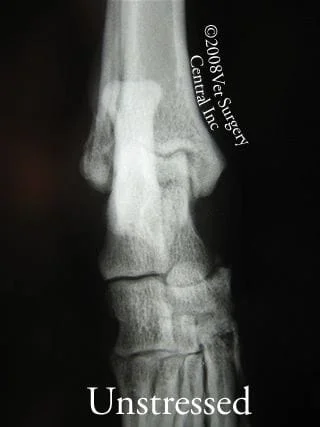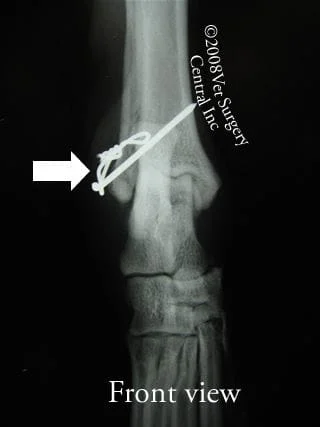Key Points
Hock joint instability is a very debilitating condition that is caused by trauma
Instability can be due to tearing of ligaments or a fracture of the fibula or bottom of the tibia bone
Surgical repair of the ligaments or bones is needed for the best outcome
The prognosis tends to be better if the bone is broken and can be repaired versus a ligament tear alone
Anatomy
The hock joint of a dog or cat is equivalent to our ankle joint. The shin (tibia) bone is connected to the hock joint which then joins the talus bone (one of the bones of the paw). The fibula bone (splint bone) runs along the full length of the tibia bone. Ligaments on the inner and outer part of the hock joint hold the bones together. Each side of the hock joint has two important ligaments (total of four main ligaments that hold the hock together)
Signs
Owner will note acute lameness of the affected hindlimb and may note swelling of the hock joint; heat may be detected from the inflamed joint in dogs that do not have a dense hair coat. Hock instability is easily detected on physical examination. The veterinarian must test the hock by trying to open the joint from the outside and inside (medial and lateral) sides of the joint which the hock in extension and flexion. In addition, the hock must be stressed by twisting it to the inside and outside (internal and external torsion) to see if the ligaments are stable. The video to your right demonstrates hock instability; take note of the instability when the hock is twisted.
Diagnosis

Treatment



